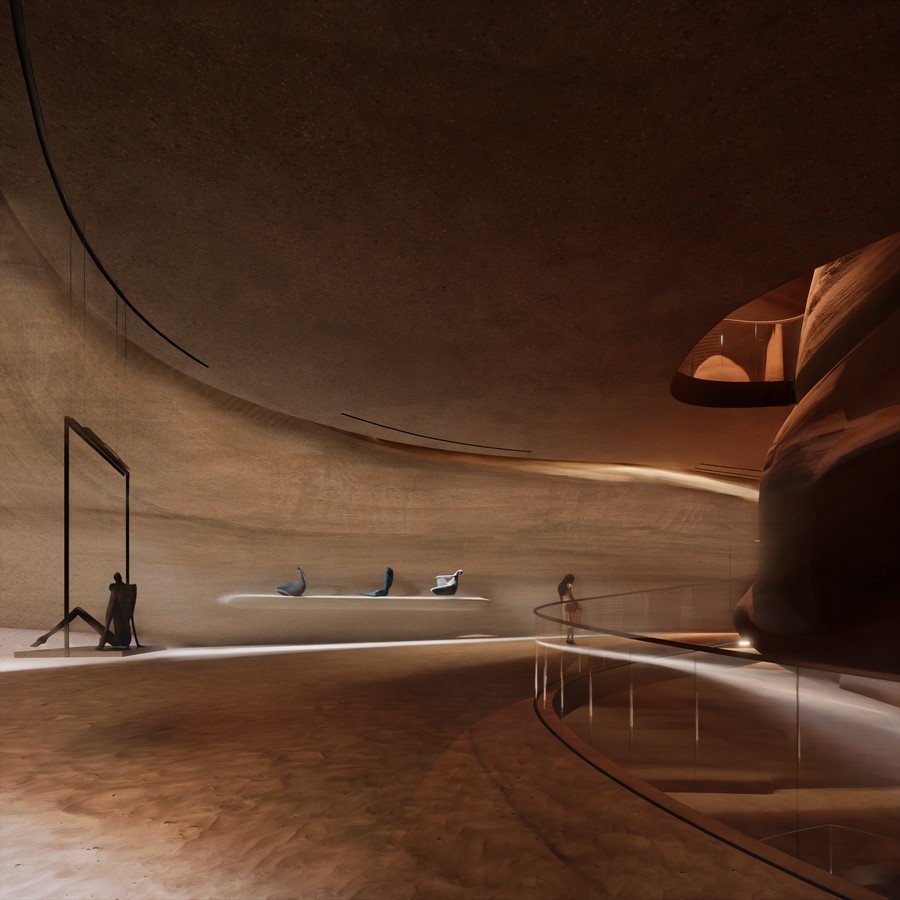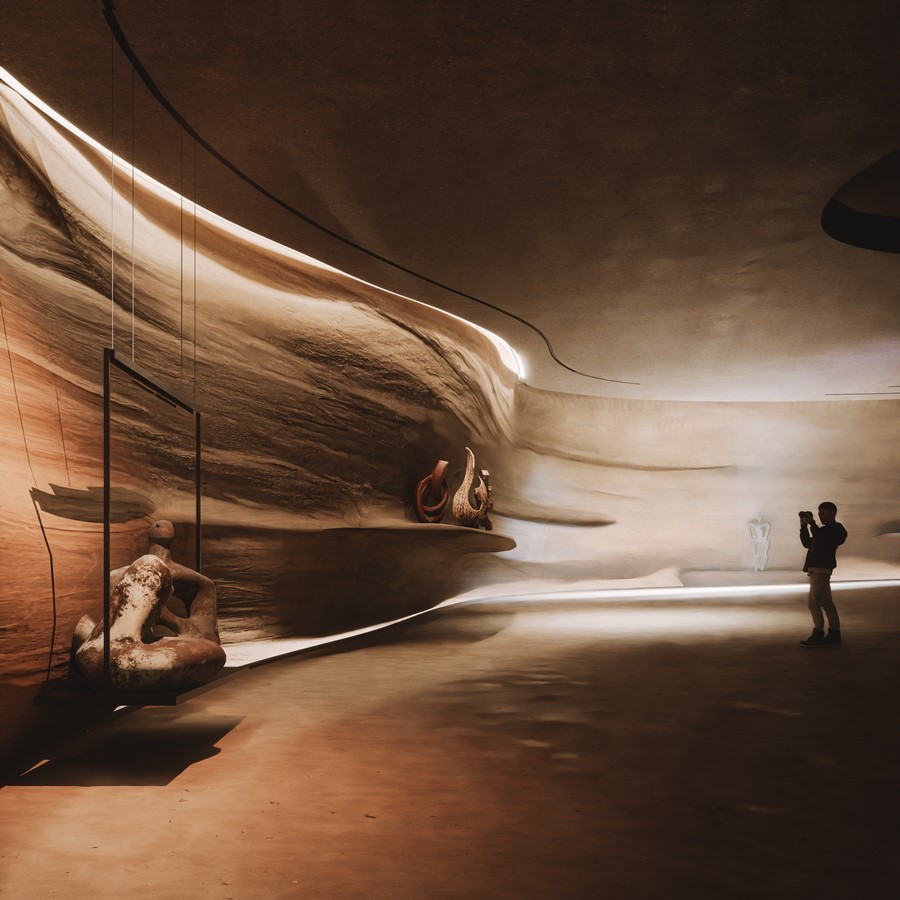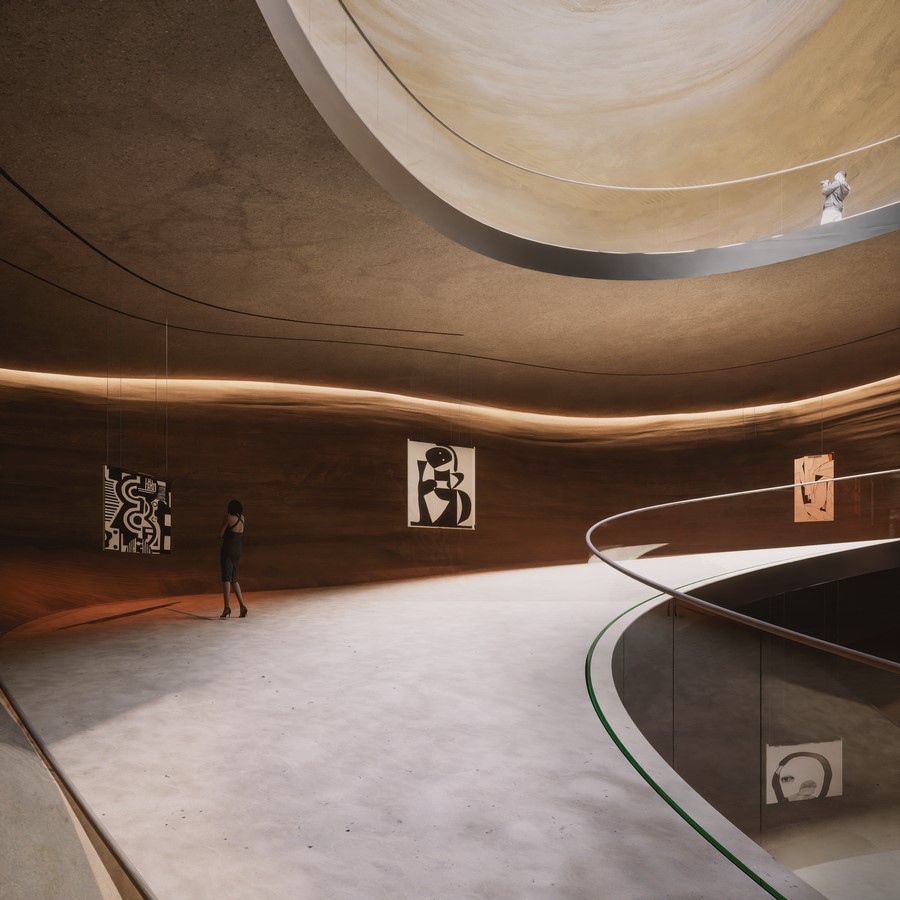In the quest to untangle the web of urban traffic, Contemporary Cities have surrendered swathes of pedestrian sanctuaries to the relentless reign of automobiles. The once-lustrous pathways, threading between towering edifices and bustling streets, have quietly receded into the shadows. Can architecture, as a muse of transformation, summon the rebirth of navigable cities and rekindle the rightful ascendancy of pedestrians in the modern urban tapestry?
Project Name: Dubai Art Museum
Architecture Firm: Kalbod Design Studio
Principal Architect: Mohamad Rahimizadeh
Project Location: Dubai
Project Height: 60 Meters
Built Area: 2000 sqm
Site Area: 4000 sqm
Tools Used: Rhino – Twinmotion – Photoshop
Architect: Shaghayegh Nemati – Ziba Baghban – Zahra Tavassoli – Nakisa Montazeri – Ghazaleh Eskandari – Pegah Samei – Pardis Ahmadi
Design Year: 2023
Completion Year: 2030

Enter the Dubai Art Museum, a poetic solution etched in architecture, a melody composed to gift pedestrians their rightful verses within the city’s symphony. It marks the inaugural note in the harmonization of a city like Dubai, orchestrating its evolution into a stroll-worthy tableau for every soul that treads its thoroughfares.
Choosing the canvas of Burj Park, nestled near the luminous Burj Khalifa, the Dubai Fountain, and the grandeur of Dubai Mall, the Art Museum aspires to be more than an architectural marvel. It yearns to metamorphose into a vital epicenter, a heartbeat resonating with significance in the public and tourist realms, offering a rare communal embrace in the city’s concrete embrace.

From the verdant embrace of Burj Park to the very sinews of the museum structure, a ballet of pathways choreographs the pedestrian’s journey. These paths waltz through functional spaces – ephemeral markets and al-fresco galleries – leading to a crescendo at a ramp, a lyrical ascent heralding the museum’s threshold. Suspended five meters above the park’s bosom, this poetic bridge connects the park to the museum’s semi-transparent skin, a diaphanous gateway that whispers promises of artistic revelation.
Beneath this ethereal ramp, a concealed labyrinth unfolds, inviting the pedestrian on a clandestine voyage beneath its arches, where pathways intersect like stanzas and shaded alcoves invite contemplative pauses, serenaded by the rustle of leaves and the city’s heartbeat.
Entrance into the sanctum of the museum is unveiled through a semi-transparent membrane, a poetic overture revealing the building’s central core in a dance of curves and layered shadows. It sets the stage for the main act, an enclave influenced by the building’s architectural poetry, a space that cradles cultural soirees and artistic musings beneath its celestial dome.
This layered sanctuary, a poetic refuge, shields against Dubai’s unrelenting elements while orchestrating a seamless flow of life. Through its translucent facade, it paints a visible sonnet of vitality within, mirroring the vibrant cadence of the external world.

A vertical odyssey awaits within the hallowed halls of the museum’s central core, an ascension guided by elevators to the zenith. A gradual descent down the lyrical ramp then unveils panoramic vistas of gallery spaces and artistic tapestries, a poetic journey that concludes at the inception, the heart’s return to the main lobby.
The Dubai Art Museum embarks on a poetic pilgrimage, where the interplay of human presence, the dance of interaction with the architectural opus, and the communion with fellow citizens shape the verses of Dubai’s urban destiny. In this poetic ballet, the Dubai Art Museum stands as an edifice and a maestro, conducting the symphony of Dubai’s urban renaissance.


















